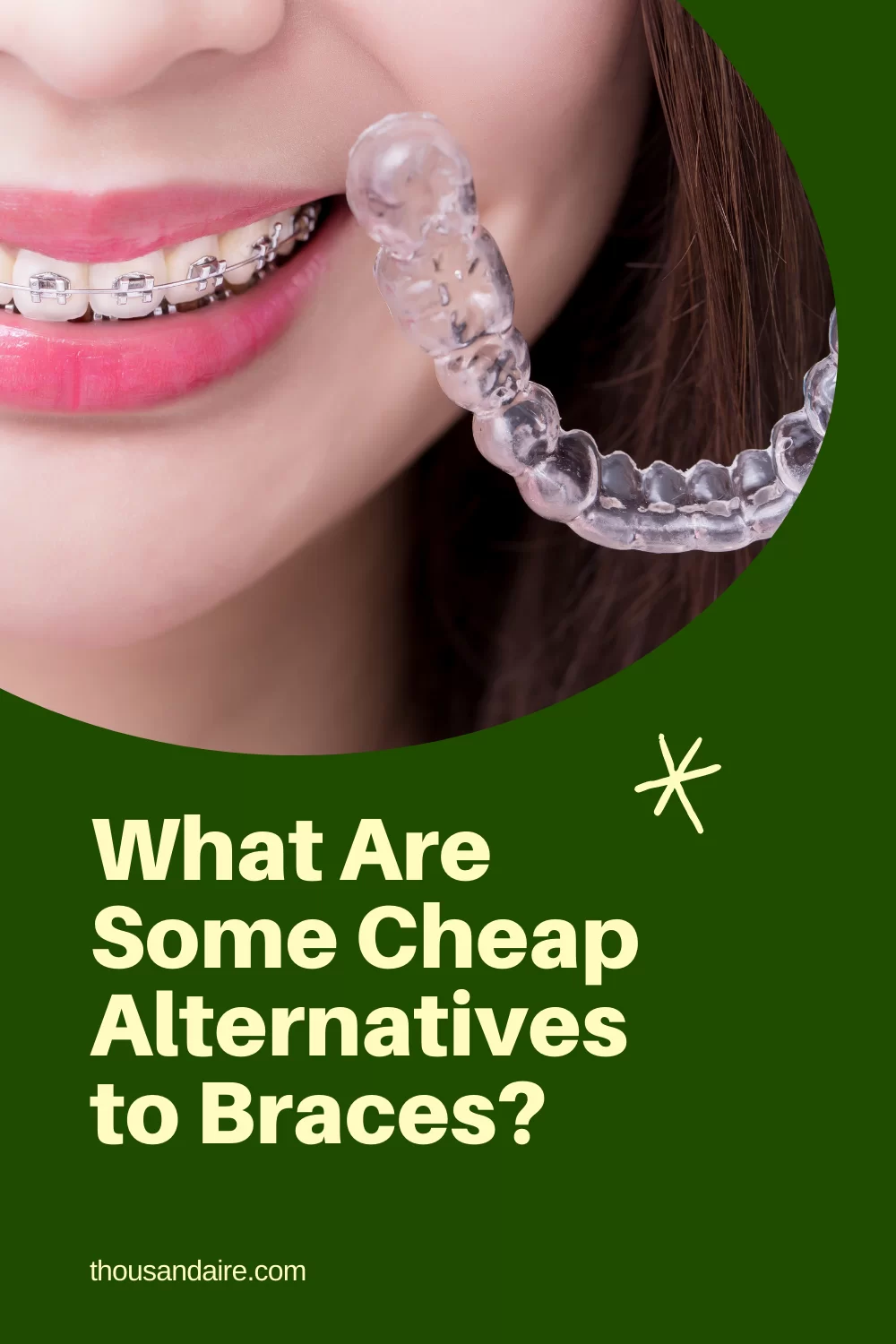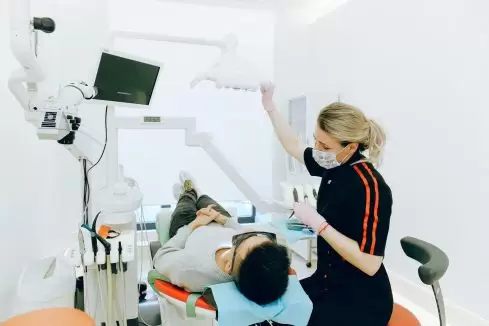
The eyes may be the window to the soul, but your teeth are also a reliable window into the state of your health. Most professionally trained medical and dental professionals can tell with a glance at your teeth if you have heart problems, for example. However, it does not take a professionally trained dental expert to see that crooked teeth can be viewed as a stigmatizing embarrassment. While dental braces are traditionally the best way to straighten teeth, it is a very time-exhausting and expensive process. So, what are the cheap alternatives to braces?
Dental braces are an orthodontic device that is physically attached to the front or back sides of teeth. Dental braces that can be attached to the back of teeth are called, “lingual,” braces. They are expensive are popular because they make braces look invisible.
And that is the prime problem with dental braces – the aesthetics. Dental braces are usually made out of metal wires and are attached to individual teeth.
After attachment, the aesthetics of dental braces can look like metal scaffolding attached to the teeth. The aesthetics of braces can be very stigmatizing and embarrassing for the wearer.
However, the use of dental braces to fix a crooked smile is statistically very effective. The real problem with dental braces is the time required to wear them and the expense.
It can cost you thousands or tens of thousands of dollars to get braces.
Cheap Alternatives to Braces – The Cost Factor
Before we can discuss cheap alternatives to braces, let’s first discuss dental braces in depth.
To get fitted for dental braces, you must schedule monthly visits to the orthodontist.
An orthodontist is a dental professional specially trained to fix crooked teeth, gapped teeth, and jawline irregularities. It is an orthodontist who will attach, readjust, tighten, and remove dental braces as needed.
Every 60-days to 120-days, an orthodontist must analyze the braces and tighten them as necessary. Dental braces must be strategically assessed and tightened to slowly and incrementally straighten crooked, misaligned teeth without damaging them.
You may have to wear braces for 18-months or for as long as 3-years. That also means visiting the orthodontist monthly or bimonthly for up to 3-years.
Still, the biggest obstacle for most people who need dental braces, besides the time investment, is the financial investment.
Depending on the type of dental braces you get, you could spend anywhere between $3,000 to $10,000 for the entire process. Keep in mind that cost is just an estimate.
The braces that you may require to straighten out your teeth could cost a lot more than that.
Many dental insurance plans can partially offset the cost of dental braces, but not nearly enough to make them financially practical for many.
While you digest all of that information, let’s discuss some cheap alternatives to braces.
Invisalign Braces
The cheapest alternatives to metal braces are probably Invisalign braces.
Invisalign braces are also known as clear aligners and invisible braces. They are transparent, temporary dental guards made out of 3D-printed plastic materials.
If you have ever watched sports like boxing, basketball, or football, then you have seen athletes wearing mouth guards for impact protection.
Invisalign braces are like those mouth guards expect they are transparent and made out of a molded, flexible plastic called SmartTrack. SmartTrack is a proprietary plastic material made specifically for use in Invisalign treatments.
To start the process, you must first schedule a visit to your local orthodontist and ask to be fitted for Invisalign braces. Invisalign braces are also called, “trays.”
Then, your orthodontist will take a digital, 3D scan of your teeth and jawline. After that, a customized, transparent aligner for your top and bottom teeth will be made according to your 3D dental scan will be ordered for you.
After that, you will have to visit your orthodontist weekly or biweekly to have your teeth reassessed and get updated 3D dental scans. Then, you will get new Invisalign trays weekly or biweekly.
You will have to wear Invisalign trays at least 22-hours a day. Additionally, you can eat while wearing Invisalign too.
In contrast to dental braces, you only have to wear Invisalign trays for a year at the minimum.
The biggest contrast between dental braces and Invisalign is the cost too. It may cost you around $3,000 to $7,000 to get the Invisalign treatment.
Depending on your employment and where you live, you may also be able to partially pay for Invisalign with dental insurance too.
Dental School
Invisalign is the more aesthetically pleasing and financially practical option when it comes to teeth straightening.
However, traditional metal braces are the more realistically pragmatic option to straighten teeth.
One of the cheap alternatives to braces is to inquire about treatment at a dental school.
Here is a listing of dental schools that historically offer free dental care based on your finances.
And here is a listing of 66 American dental schools and colleges.
Do not assume that you will automatically get free treatment. Call ahead, inquire, and explain your situation.
You may not be able to get dental braces treatment for free, but it be at a reduced price at a dental school.
All treatments administered at a dental school at overseen by licensed and practicing dental professionals.
Cheap Alternatives to Braces – Take Care of Your Teeth
If you are looking for cheap alternatives to braces, taking good care of your teeth as much as possible is your best option.
Be conscious of jaw alignment when you sleep or rest your head on your palm, arm, or pillow.
Make sure you chew food evenly. Distribute biting pressure evenly instead of chewing with one part of your jawline frequently.
Sometimes misaligned and gapped teeth can be a genetically inherited condition. However, improper chewing or creating uneven jawline pressure points, even subconsciously, over sustained periods of time can cause crooked teeth.
Bush your teeth and floss every day. Take care of your teeth as a natural habit and you may never have to consider cheap alternatives to braces.
Read More
How Long Do You Have to Wear Braces for Crooked Teeth
4 Tips to Avoid Expensive Dental Treatments
What Is The Average Cost Of Tooth Extraction?
Why Seniors have to take care of Their Dental Health
NM and PA Resume Dental Procedures With Restrictions
Allen Francis was an academic advisor, librarian, and college adjunct for many years with no money, no financial literacy, and no responsibility when he had money. To him, the phrase “personal finance,” contains the power that anyone has to grow their own wealth. Allen is an advocate of best personal financial practices including focusing on your needs instead of your wants, asking for help when you need it, saving and investing in your own small business.

